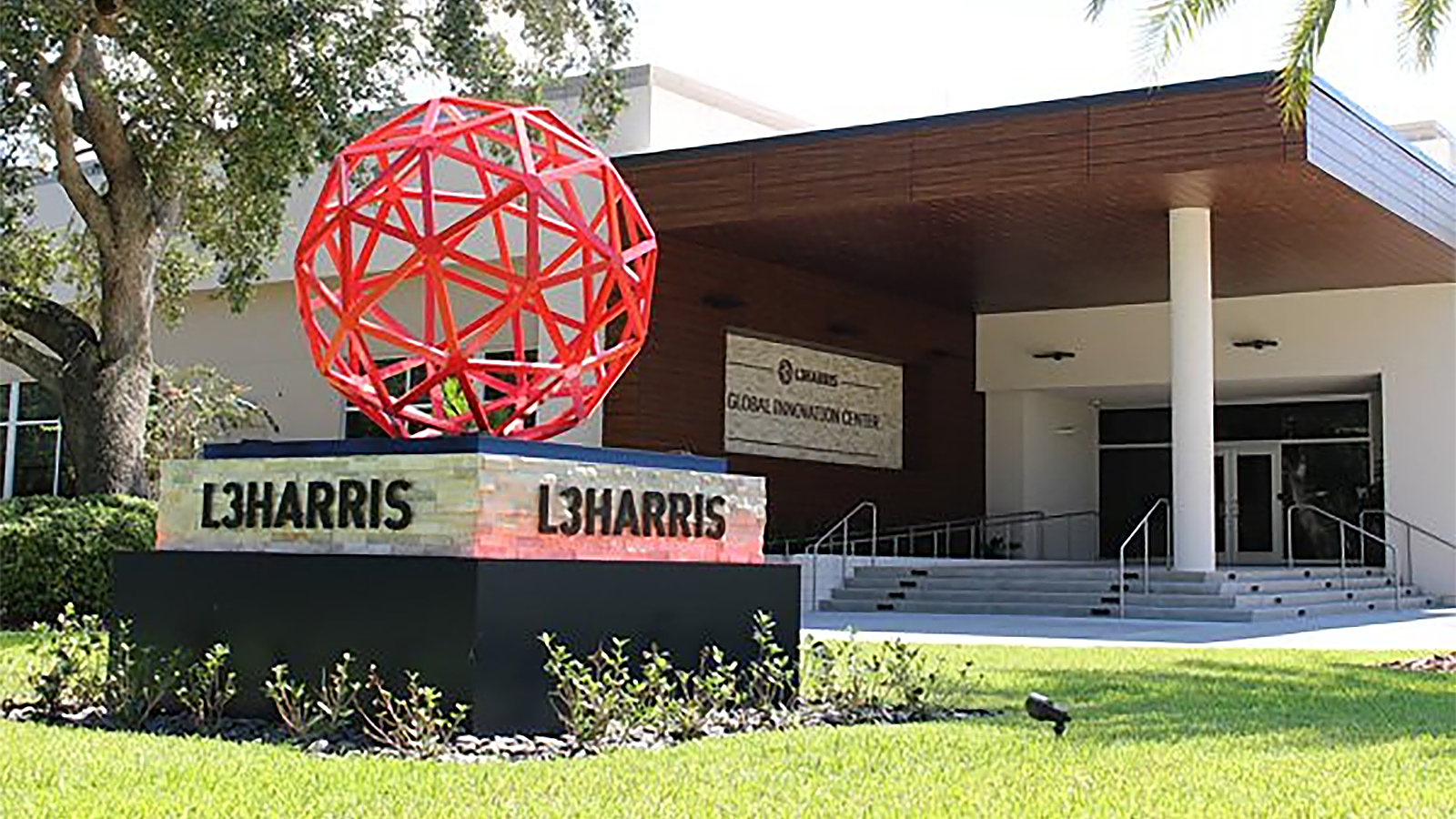
L3Harris headquarters in Melbourne, Fla. (Via L3Harris.com)
Updated Jan. 4, 2021 a.m. ET with further comment from L3Harris on its commercial aviation unit.
WASHINGTON: L3Harris has streamlined its business focus, in effect dropping its commercial aviation unit to lean into defense operations — including its rapidly growing footprint in military space.
“Our intent remains clear: Be the trusted disruptor for U.S., allied, and partner national security endeavors,” said Christopher Kubasik, vice chair and CEO in a company release Monday. “This lean approach will deliver resilient, innovative, end-to-end solutions that propel timely mission success for our customers.”
An L3Harris spokesperson elaborated in an email to Breaking Defense, saying that “in part, the reorganization further emphasizes the company’s focus on efficient and disruptive tech which include responsive space solutions. We are ready to address urgent customer needs such as precision tracking for hypersonic missiles and anti-satellite tests from great power competitors.”
RELATED: ‘Hundreds’ of China hypersonic tests vs. 9 US; Hyten says US moves too slowly
The aerospace and defense firm, which pulls in about $18 billion in annual revenue across its portfolio, over the past two years has increasingly, and successfully, pushed itself from a subcontractor to prime level in the space and missile defense arena.
This includes winning a $194 million contract in October 2020 — in a surprise victory — to build four satellites for the Space Development Agency’s Tracking Layer Tranche 0 designed to detect ballistic, cruise and hypersonic missiles using a wide field of view infrared (IR) sensor.
“This is really the first, very large Department of Defense missile defense area that we’ve won at the spacecraft level. So, it’s very new to us,” Bill Gattle, president of L3Harris’s space systems, told Breaking Defense at the time. “It was important for us to get into the game, so to speak.”
That win was followed by a January 2021 contract worth $121 million from the Missile Defense Agency to build the related Hypersonic and Ballistic Tracking Space Sensor (HBTSS), which will complement the SDA birds and use a medium field of view IR camera.
L3Harris’s announcement explained that the company now will operate under “a new alignment and organization of core businesses, moving from four to three focused segments: Integrated Mission Systems, Space and Airborne Systems and Communication Systems.”
While the release didn’t mention it, the abandoned fourth segment was its Aviation Systems segment. Headquartered in Arlington, Texas, that unit was responsible “commercial aviation solutions, systems, networks and pilot training,” according to an August 2021 fact sheet on the company’s website.
“Some core aviation businesses that remain after our portfolio shaping were moved to Integrated Missions Systems and Space and Airborne Systems, in alignment with other aviation-focused businesses existing within those organizations,” a spokesperson said.
Aviation Systems brought in about $3.4 billion in 2020, the website noted. By contrast, the Integrated Mission Systems segment had $5.5 billion in revenue; Space and Airborne Systems, $4.9 billion with slightly less than half of it space-related and Communications Systems, $4.4 billion.
Connecticut lawmakers to grill Army, Lockheed about job cuts at Sikorsky helicopter unit
“The Connecticut delegation has questions about why, with that [FY24] appropriation in hand, this happened,” said Rep. Joe Courtney, D-Conn.


























